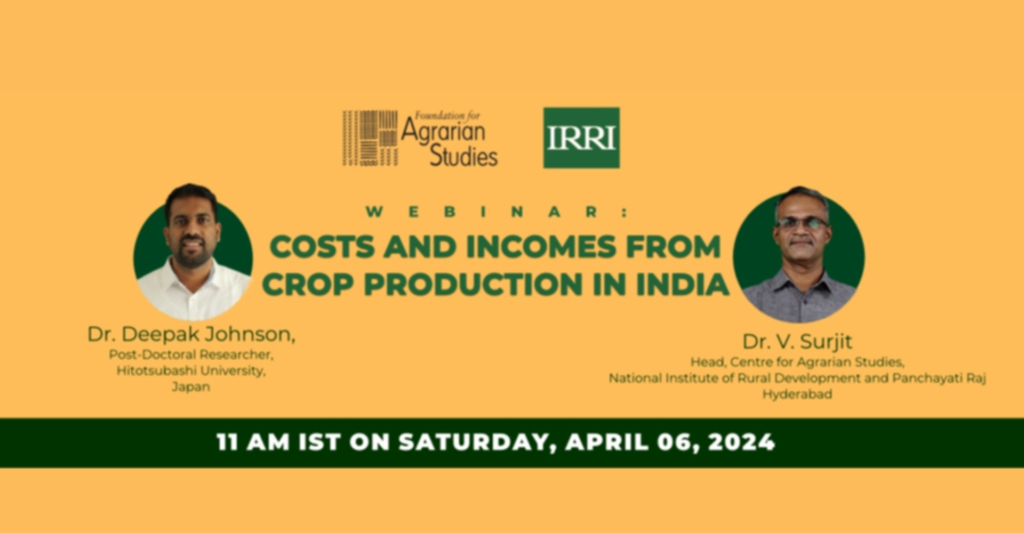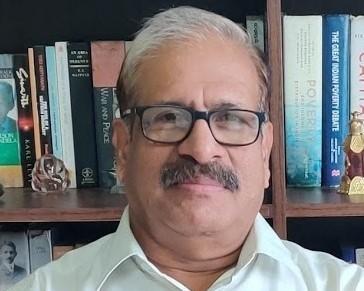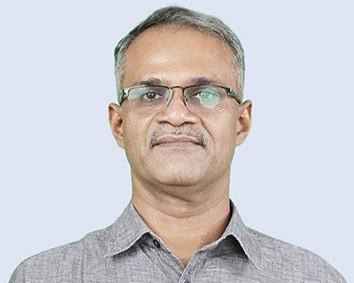Long-term trend in costs of cultivation data point to reduced profitability in recent years.
On Saturday, April 06, 2024, the Foundation for Agrarian Studies (FAS), Bengaluru, organsied a webinar on “Costs and Incomes from Crop Production in India”. The Foundation recently released a report titled “Trends in Costs and Incomes from Crop Production in India.” It is an outcome of a research project conducted by the Foundation in association with the International Rice Research Institute (IRRI). The project report presents an in-depth analysis of the data on costs of cultivation published by the Commission for Agricultural Costs and Prices (CACP) for the previous two decades.
Dr. Deepak Johnson, a JSPS Postdoctoral Researcher, Institute of Economic Research, Hitotsubashi University, Japan, who was the lead author of the report, presented its main findings. The event was chaired by Dr. V. Surjit, Associate Professor, & Head, Centre for Agrarian Studies, National Institute of Rural Development & Panchayati Raj.
The presentation began with laying out the significance of farm incomes for the vast majority of the rural population. Performance of the agriculture sector, particularly trends in cost and returns, and structure of cost of cultivation are crucial for livelihoods of this section. These trends also give direction for appropriate agricultural policy formulation.
The study discussed in detail the costs, incomes, cost structures, yields, use of inputs, prices, and profitability for ten selected crops (2 cereals –paddy, and maize; 3 pulses – urad, gram, arhar/tur; and 5 oilseeds – rapeseed and mustard, groundnut, soybean, sunflower, and sesamum) across different states in India.
It concluded that the selected crops suffered from substantial yield gaps. It also highlighted the rising cost of cultivation, and declining profitability for all the crops. The declining trend of profitability has continued even post-2020. There were wide variations in profitability, yields, and real incomes across states, which have not been bridged in the last two decades. However, the variations in costs across states have reduced over time. In other words, the gap in costs between states have become narrower than gaps in incomes and yields. Various policy measures for prices, yields, and costs were required to reduce the regional imbalances and to improve overall incomes from agriculture.
In his comments, V. Surjit, the Chair of the session, discussed the different studies related to farm incomes in India, and their relevance to understanding the agrarian economy. He also underlined the important data sources for studying the subject, along with their limitations. The data on “Cost of Cultivation of Principal Crops (CCPC) Scheme carried out by the Directorate of Economics and Statistics (DES), Ministry of Agriculture and Farmers’ Welfare, remains relevant. Surjit highlighted the seminal contributions of the eminent agricultural economists Professors Abhijit Sen and M.S. Bhatia. This report, he noted, was a follow-up to their work. He also discussed a number of possible studies that could be taken up as a following the current study.
The event ended with an engaging round of questions and answers. The Youtube recording can be accessed at our event page.

















































































